Pilot Briefing
GAMA: Things are looking up - 2010 a rough year for aircraft shipments

Three green. Out of five general aviation economic recovery indicators, three—flight activity, corporate profits, and tax policies—are showing positive signs, the General Aviation Manufacturers Association (GAMA) reported February 22 during its State of the Industry address.
“We have three greens,” said John Rosanvallon, GAMA chairman of the board and Dassault Falcon CEO, “and that’s always a good sign in aviation.”
U.S. business jet flight activity increased 10.8 percent from 2009 to 2010, while business aviation in Europe increased 5.5 percent. Corporate profits, which drive aircraft purchases, increased 46 percent globally and 26 percent in the United States. Favorable tax policies, including the extension of 100 percent bonus depreciation, also will help the market, Rosanvallon said.
However, he highlighted two areas of caution. The used business jet market is improving very slowly, with an inventory of 14.8 percent in December 2010. Asking prices continue to be depressed, he said, adding that the time to sell an aircraft remains too long.
“We’ll see what’s going on [in this area of the market] this year,” Rosanvallon said.
The area of highest concern remains the limited availability of financing for mid-size jets, light jets, and small aircraft. In 2010, 78 percent of transactions for business jets were cash deals, a 13-percent increase over 2009.
Meanwhile, shipments continued to suffer for the third straight year, decreasing 11.4 percent to 2,015 units in 2010. Piston deliveries experienced a 7.7 percent decline in 2010, with 889 delivered. Turboprops declined 17.7 percent, with 363 deliveries. Business jet shipments decreased 12.3 percent, with 763 deliveries.
GA billings increased, thanks to the business jet market and expanding global markets. Billings increased 1.2 percent in 2010 to $19.7 billion. Billings to emerging markets in Asia Pacific, Middle East/Africa, and Latin America all increased, while North America and Europe saw a decrease. This helped contribute to an 11-percent increase in U.S. exports in 2010 to 62 percent of U.S. billings.
Although the general aviation industry is starting to turn the corner, GAMA President and CEO Pete Bunce said, “I look at 2011 with both optimism and caution.”
Bunce forecast that the economic recovery should continue to pick up, backlogs should increase, and new markets should continue to expand. However, he stressed that at a time when the government is reducing spending and increasing regulation, the industry must collaborate with government agencies to help streamline and shape the regulations that govern general aviation. —Alyssa J. Miller
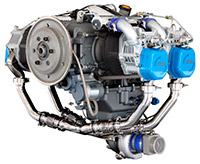 SMA diesel engine certified in Europe
SMA diesel engine certified in Europe
The 230-hp SMA SR305-230E diesel engine received certification in Europe from the European Aviation Safety Agency (EASA), and is guaranteed for a 2,000-hour time between overhaul. The certification was granted in January and clears the way for certification by the FAA—expected early this year.
SMA, a subsidiary of Snecma (part of the Safran aerospace group), designed the engine for single- and multiengine aircraft. Maule Aircraft has experimented with the engine for years on its models.
The engine is scheduled to enter service in 2012. A chief advantage of the engine is that it uses kerosene-based jet fuel, something important in areas of the world where 100LL is unavailable. Other claimed advantages include lower fuel cost and better fuel economy, plus lower carbon dioxide emissions and the elimination of all lead emissions.
Aviation charity nominated for Nobel Peace Prize
Wings of Hope, an aviation charity based in St. Louis, Missouri, that implements poverty reduction strategies to help those in need to attain self-sufficiency, has been nominated for a 2011 Nobel Peace Prize.
“This is a great honor to all of our volunteers and donors,” said Wings of Hope President Doug Clements. “They are the ones who see the humanity of our fellow men and who seek to extend the hand of human kindness to them.”
The organization was founded in 1962 to provide a refurbished aircraft to a nurse in Kenya who used a fabric-covered Piper to reach nomadic tribes in the desert. Now it operates in 155 countries.
Boeing woman named for NAA award
The National Aeronautic Association (NAA) has presented its 2010 Katherine and Marjorie Stinson Award to Boeing employee Nelda K. Lee.
NAA awarded the Stinson Trophy at the International Women in Aviation Conference in Reno, Nevada, on February 26.
Lee is responsible for flight and ground test engineering for the four military aircraft that are manufactured in St. Louis, Missouri, by Boeing. These aircraft are the F–15 Eagle, AV–8 Harrier, T–45 Goshawk, and F/A–18 Hornet.
In addition to her career with The Boeing Company, Lee is a commercial pilot with instrument, multiengine, and helicopter ratings. She has flown in several Transcontinental Air Races. She is a member of The Ninety-Nines and International Women Pilots.
She is serving on the board of trustees for the Amelia Earhart Birthplace Museum, and is a member of The Whirly-Girls and the International Women Helicopter Pilots. She was inducted into the International Women in Aviation Pioneer Hall of Fame in 2004. —Jill W. Tallman
Say Again?
Test yourself with these aviation quiz questions from the AOPA Pilot staff.
- What was the code name for the secret program that evolved into the SR–71 Blackbird?
- How many of the 32 SR–71s built by Lockheed were lost to enemy aircraft, ground fire, or missiles during the 24 years they flew over hostile territory?
- Why do SR–71s have white main-gear tires?
- The SR–71 windshields are made from four-inch-thick pieces of this exotic material to withstand in-flight temperatures of 450 degrees Fahrenheit.
- How hot does the surface of an SR–71 get during high-speed flight? And what’s the hottest area?
- More than 90 percent of the SR–71 is made from titanium, an exotic material that, ironically, could only be procured under false pretenses from this country that was frequently overflown by the spy planes.
See below for answers.
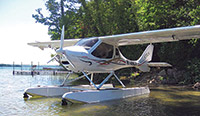 Flight Design now on floats
Flight Design now on floats
During the recent U.S. Sport Aviation Expo I had the opportunity to be one of the first to fly the recently certified Flight Design floatplane, a light sport aircraft (LSA) based on the Flight Design CTLS Lite model. To purchase, buyers will need to buy a CTLS Lite at a base price of $119,980 from Airtime Aviation in Tulsa, Oklahoma, and add the $40,000 float conversion option. The conversion is completed in Tulsa.
The first one off the line made an appearance in Sebring, Florida, in January, where it attracted enough attention to require 24 demonstration flights.
CTLS demonstration pilot Tom Gutmann said the CTLS carries “too much fuel” for a floatplane—32 gallons usable. That limits the full-fuel payload to 302 pounds (it has a useful load of 500 pounds) but is easily remedied by flying with partial fuel for most operations. The floatplane can cruise at 100 KTAS.
The floats were especially made for the CTLS by Claymar Floats in Denfield, Ontario. The company has operations in New Zealand, and specializes in floats for aircraft weighing up to 3,500 pounds. With half fuel, the aircraft can easily lift two 200-pound passengers (LSAs are limited to two seats) and fly for 3.5 hours.
My flight followed a demonstration flight in the heavier Flight Design CTLS. To produce the Lite model, 50 pounds were removed from the airplane by using lighter parts and removing some of the more sophisticated avionics and systems found in the CTLS.
Gutmann flew to a lake west of Sebring. The aircraft slipped smoothly onto the surface with no directional problems after settling in the water. Gutmann used power to tractor the aircraft through the water, partly because of glassy conditions. Using a bit of power is best for directional control, he said.
The 100-horsepower Rotax engine had plenty of power to lift the composite aircraft off the surface. On the way back to Sebring I took the controls of the amphibious aircraft, and noticed no vibration from turbulence passing over the floats. Gutmann suggested I keep it high since it comes down quickly with the drag from the floats. Although I had never landed an amphibious aircraft before, Gutmann talked me through a touchdown that took little extra skill. Amphibious aircraft use small wheels beneath the floats for operations on land. Taxi was like that of a conventional aircraft.
Gutmann expects that flight schools and individuals who like playing on the water will be among his customers.
Mooney hunkers down to wait out recession
Most of Mooney Aviation Company’s remaining 53 employees, down from 500 in 2008, were laid off at the end of 2010 to await new investment. The company is not shutting down, and continues to support present owners with spare parts.
“We are not shutting down,” said Mooney Chief Financial Officer Barry Hodkin. “However, we cannot continue to subsidize the company at the level we have in the recent past. We have been in discussions with potential investors for more than 18 months and will continue to work with them. If things change, then the scope of this layoff could change.”
Mooney recently foreclosed on itself, a move that eliminated debt and changed the name from Mooney Aircraft to Mooney Aviation Company. The move was aimed at making the company more attractive to investors.
“We will continue to protect Mooney’s assets both tangible and intangible,” Hodkin said. “Those assets include the facilities and our certificates for production and manufacturing.”
Air Tractor founder dies
After more than 50 years of designing aerial application airplanes, Leland Snow, founder and president of Air Tractor, died February 20 at the age of 80.
Snow created his first aerial application aircraft in 1951. After manufacturing his own airplanes and working for Rockwell-Standard’s Aero Commander division, Snow founded Air Tractor in 1972 in Olney, Texas, according to a statement on the company’s website. By 2010, the company had delivered its 2,500th aircraft. Air Tractor manufactures the AT–401, AT–402, AT–502, AT–504, AT–602, AT–802, and AT–802F aircraft.
“Actively involved in Air Tractor aircraft design and manufacturing until his death, Snow was also a great supporter and contributor to the agricultural spray aircraft industry, helping to promote agricultural aviation, educate the public about the benefits of aerial agricultural spraying and supporting efforts to introduce and train young pilots in agricultural spraying careers,” Air Tractor officials said in a tribute to Snow. —Alyssa J. Miller
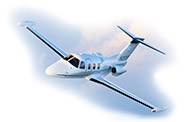 Eclipse, Sikorsky ink equity investment
Eclipse, Sikorsky ink equity investment
Eclipse Aerospace has completed an equity investment by Sikorsky Aircraft that was first announced last fall. Under the agreement, Eclipse will call upon the infrastructure of Sikorsky, including global supply chain support, global parts distribution, and various production restart resources.
No dollar amount was given.
The move is key to restarting the production of the twin-engine Eclipse 500. “I have said it before and it is worth repeating,”said Mason Holland, CEO of Eclipse Aerospace, “…with this agreement we now have it all—a phenomenal, fuel-efficient twin-engine jet; an enthusiastic customer base; and a fantastic engineering, support and service staff, all coupled with the depth, experience, and strength of Sikorsky Aircraft.”
Located in Albuquerque, New Mexico, Eclipse Aerospace provides engineering, service, and support for the fleet of roughly 260 Eclipse 500 jets. It also offers refurbished Eclipse 500 jets with the latest upgrades. Sikorsky Aircraft, manufacturer of the Black Hawk helicopter and other iconic aircraft, is a subsidiary of United Technologies Corp.
Cirrus to be sold
Cirrus Aircraft will be sold to China Aviation Industry General Aircraft Co. (CAIGA), Cirrus officials announced February 28. The 500-employee firm based in Duluth, Minnesota, will merge with the Chinese firm and then be acquired once the regulatory approvals are met. Cirrus officials didn’t disclose the terms of the deal between CAIGA and majority owner Arcapita, but said the pioneering aircraft manufacturing firm will continue building airplanes in the United States and have the necessary capital to expand its product line.
“Duluth and Grand Forks are our home,” said Cirrus CEO Brent Wouters. “This is where we do business. This is where we’re staying. And this is where we’ll add jobs when our industry rebounds.” Wouters said the sale to CAIGA is sure to boost Cirrus’ Vision single-engine jet program. The V-tail jet first flew in 2007 but the company pulled back on development when the economy fell into recession. Cirrus has said it will take about three years and more than $100 million to certify the five-seat, 300-knot airplane once it resumes full-scale development. —Dave Hirschman
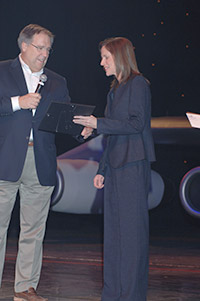 WAI convention is a winner in Reno
WAI convention is a winner in Reno
Any convention that opens with a replica of an airliner on stage with fake smoke and flashing lights is surely going to be a good one. That was the case with the 22nd annual International Women in Aviation Conference in Reno, Nevada. On stage with the 707 (the Grand Sierra Resort uses the two-third-scale replica for other events) appeared WAI President Peggy Chabrian and AOPA President Craig Fuller.
“To see the enthusiasm was very heartwarming,” said Fuller, who presented the AOPA Student Pilot Scholarship to Krista Crandall of Thornton, Colorado.
Nearly 3,000 attendees convened in Reno for the conference. “The conference is about far more than pilots,” said Chabrian. “We also represent individuals from academia, maintenance, research, engineering, and more.”
The enthusiasm was palpable throughout the exhibit hall and at the sessions and events. More than 120 companies and organizations representing all aspects of the aviation community exhibited at the event. There were giveaways—airline tickets from Delta, Air Tran, and others; merchandise from organizations such as Women in Corporate Aviation and UPS; and even a Coach bag from Signature Flight Support (a company that obviously knew its audience). More than $690,000 in 76 scholarships were distributed and nearly $20,000 was raised in a silent auction for WAI’s Endowment Fund.
Five women were inducted into WAI’s International Pioneer Hall of Fame: L. Tammy Duckworth, Black Hawk pilot and current assistant secretary for public and intergovernmental affairs for the U.S. Department of Veterans Affairs (see “Something to Overcome,” March 2010 AOPA Pilot); Maj. Gen. Susan Helms, director of plans and policy for the U.S. Strategic Command; Hazel Ying Lee, the first Chinese-American woman to earn a pilot certificate; Mary Ann Martin Wyall, WASP historian; and Dr. Peggy Chabrian, WAI president.
—Julie Summers Walker
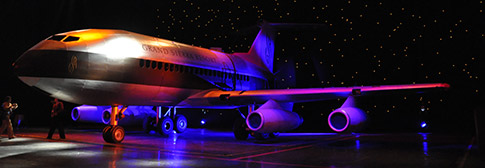
Answers: Say Again?
- The project known as “Arch Angel” created the A–1 through A–12 aircraft that preceded the Blackbird.
- None (although 12 were lost in operational or training accidents).
- The tires are coated with aluminum oxide to reflect heat so that the tires don’t explode in wheel wells during high-speed flight.
- Quartz.
- 1,000 degrees F, and the hottest part is the top portion of the engine cowls near the compressors.
- The Soviet Union.
Do you have suggestions for aviation quiz questions? Send your questions to [email protected].


